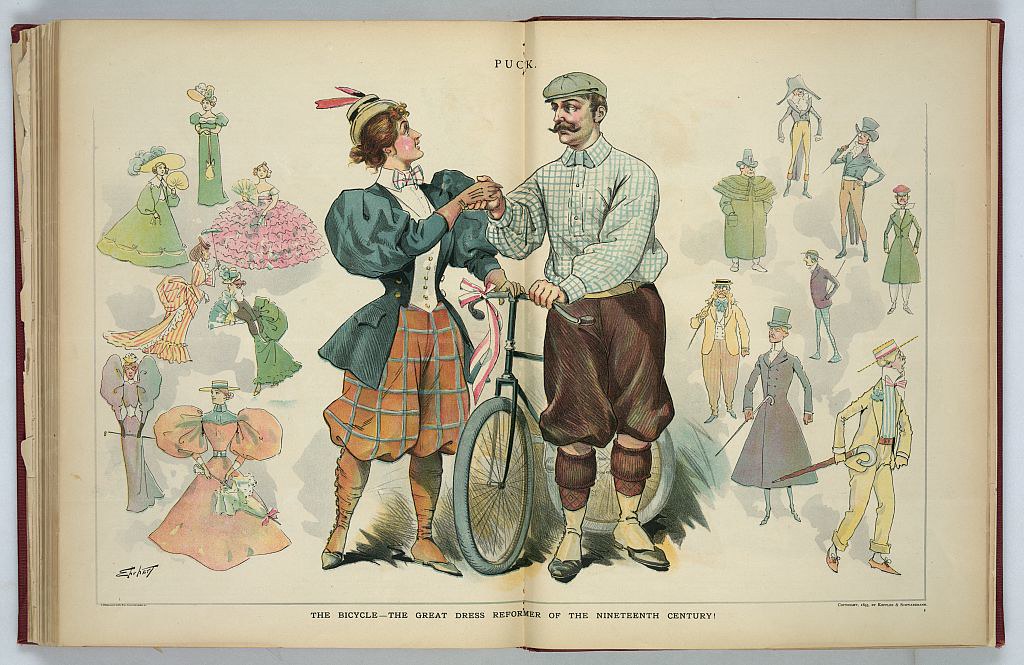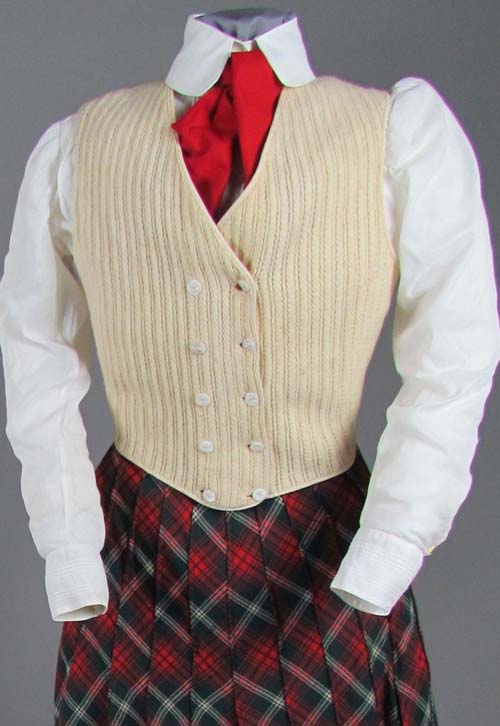As soon as the weather gets a little warm, I feel obligated to go outside and enjoy it after the cold and dark of the winter (although I can't complain--Boston had a very mild winter this year!)...and I'm itching to go out for a bike ride. Instead, today I'm adding on to my series of
tartan-related posts with a look at the last decade of the 19th century and the first two decades of the 20th.
By the end of the 19th century, more women were joining the workforce, participating in sports (particularly new were bicycling and golf), attending college, and organizing to push for women's suffrage in force. With these changes came an pop culture "profile" for these active women invading previously-male domains: the "new woman." The term was used by supporters and detractors alike, but I particularly like
this description from 1916 by anthropologist Elsie Clews Parsons: "the new woman means the woman not yet classified,
perhaps not classifiable, the woman new not only to men, but to herself."
 |
| Cartoon in Puck: "The Bicycle--The Great Dress Reformer of the Nineteenth Century!" |
The new woman needed attire appropriate for breaking down barriers, and looked to the tailored shirtwaists and jackets (and bloomers for sports) traditionally associated with men's clothes. These new ensembles included a variety of textiles and patterns: pinstripe,
tweed, checks, and (of course) tartans were frequently included in both day and sportswear.
 |
| Golf suit with pleated tartan skirt, 1908 (DAR) |
Plaid in particular appears frequently in characterizations of the new woman, especially in anti-movement materials. In these images, plaid helps to show women "invading" or "encroaching" on the male sphere. Alternatively, supporting images show the new woman as a capable, competent mistress of her own destiny.
 |
| bicycle fashions, 1897 (notice the plain suit at far right) |
 |
| vs. a cartoon of the "new woman" |
 |
| stereoscope scene threatening a man chained to the laundry tub as his wife (suited in a plaid bicycle costume) scolds |
 |
| golf fashions, early 1900s (plaid skirt!) |
As objections to new roles for women pushed against the expansion of women's opportunities, there was pressure on those at the forefront of the women's suffrage movement to counter the stereotypical depictions of "new women" as ugly, bitter spinsters. Here plaid provided a perfect opportunity, as its previous popularity with Queen Victoria and the fashionable set during the mid-19th century offered a safely feminine pattern equally appropriate for more menswear-inspired ensembles.
 |
| a more traditionally feminine tartan ensemble from 1881 |
 |
| an elegant and fashionable silk dress, 1890s |
 |
| plaid golf costume, 1898 |
 |
| sporting costumes with plaid skirts, 1899 |
Thus, plaid's popularity across men's and women's fashions secured the pattern's place in the new woman's wardrobe of the early 20th century. Whether marching for women's right to vote or exploring new horizons on a bicycle, plaid offered a stylish burst of color for kicking butt.
 |
| checked plaid suit, 1914 (DAR) |
 |
| fashions for cycling, 1897 |
 |
| bathing costume, 1910s |
 |
| day dress, 1910 |
 |
sisters in plaid suits, via
|
 |
| tram conductors in Glasgow, 1918 |
More About the New Woman:
Suffrage at the Smithsonian
Fashioning the New Woman
Fashion and Feminism

















No comments:
Post a Comment